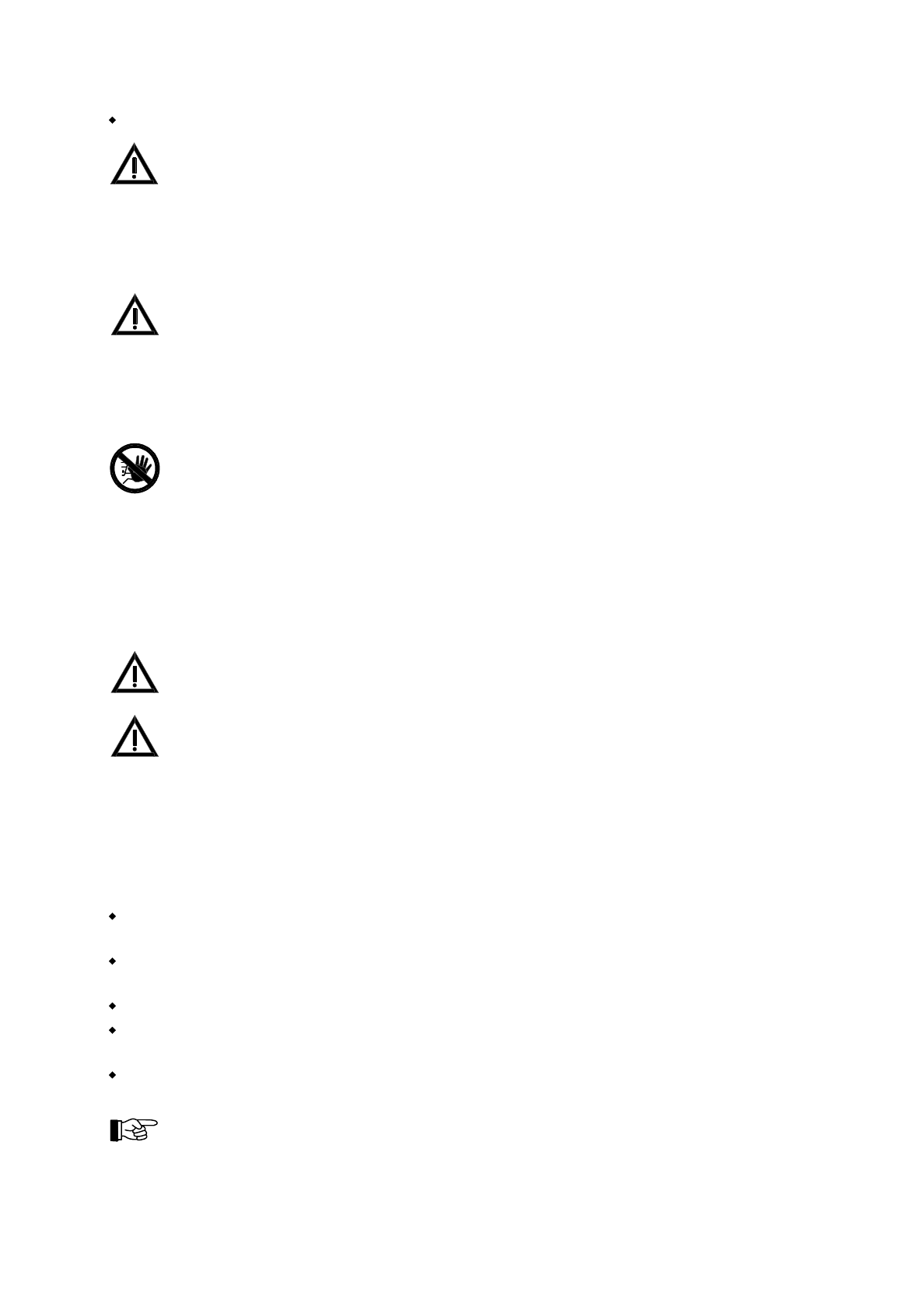
After finishing the testing of the detectors you have to terminate the test condition immediately.
Detection zones in test condition cannot transmit an alarm to the fire brigade, the alarming devices and
the actuations in case of fire! Therefore put detector zones in test condition only for test purposes and
terminate this condition as soon as possible.
6.1.3 Testing the alarming devices
The easiest way to test the installed alarming devices (e.g., sirens) is to activate them. (See from page
43 in Chapter 4.7.10: "Displaying and operating alarming devices - menu point [Alarming device:]").
The activation of the alarming devices for test purposes has the same effect as a real activation! Before
the activation make sure that everybody in the building is informed of the test alarm.
6.1.4 Testing the fire control systems
You are testing the functions of the fire control systems by activating them. (See from page 41 in Chap-
ter 4.7.8.1: "Operating actuations").
The activation of an actuation for test purposes is a real activation which may lead to an unin-
tended activation of an extinguishing system and thus to danger to life and to costly damage of
property. Contact the responsible person (e.g., fire prevention officer, safety officer) prior to
making a test alarm, so that he can make the required mechanical or electrical switch-offs of ex-
tinguishing systems or similar devices before the start of the activation.
6.1.5 Testing the transmitting devices
For safety reasons, no operating function is provided on the control panel for activating a transmitting
device for test purposes. The testing of a transmitting device can take place only by intentionally acti-
vating a detector (e.g., a manual call point).
The activation of a transmitting device absolutely has to be coordinated with the designated alarm re-
spondent (e.g., the fire brigade). Alerting the safety personnel for no good reason has to be avoided at
all costs.
The activation of a transmitting device by activating a detector is a real alarm message and leads to the
activation of all actuations and alarming devices whose parameters have been set accordingly.
6.2 Other tests
Besides testing the functions of the devices, regular checks have to be made to make sure that the sys-
tem fulfills its intended purpose. Observe all official regulations for the operation of the fire detection
system! The following list serves as example of checks of the most important criteria for a typical fire
detection system.
Make sure that no changes in the use of rooms have been made that would demand a change in the
fire detectors.
Make sure that no architectural changes have been made that would demand a change in the fire de-
tection system.
Make sure that the installed devices and wiring are not damaged.
A space of 0.5m has to be kept clear below fire detectors to ensure the proper functioning of the de-
tectors. Manual call points have to be freely accessible at all times.
Make sure that all action data (e.g., fire prevention plans) are available in their latest edition for use
in case of emergency.
Should you find problems or have doubts during a test of your fire detection system, inform your
maintainer.
HB216AE.SAM / 0130 / AN9161202
ZN5002/73/66
66
Chapter 6 • Ensuring the efficacy of the system by the user User Manual Series BC216 / Part A


















